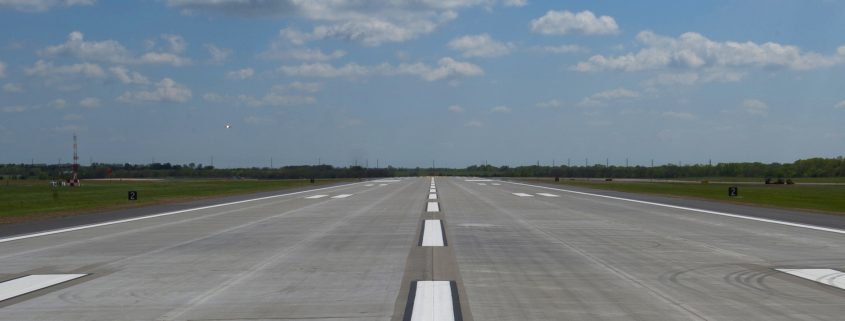As the devastating effects of climate change loom, virtually every industry has a role to play in saving the planet. With all eyes fixed on slowing the rate of global warming, to no more than 1.5°C, NLR and SEO developed a roadmap to show how the European aviation industry can meet sustainability goals and reach a net-zero carbon footprint.
The climate is changing, that is a fact. Avoiding its drastic repercussions could still be possible, but it’s going to take joint and decisive action from virtually every global industry to reduce greenhouse gas emissions and shift toward a sustainable and carbon-neutral future. With sustainability in mind, and the crucial target of capping global warming at 1.5°C, as laid out by the Intergovernmental Panel on Climate Control (IPCC), NLR and SEO Amsterdam Economics set out in 2019 on a project to chart how the European aviation community can do its part to make the industry greener. The mission: build a roadmap for aviation sustainability roadmap as part of the European report called Destination 2050.
Broad scope
For their part, NLR’s team of sustainable aviation consultants partnered with the Dutch economic research institute SEO to find out what ways the aviation industry could both mitigate emissions, while ensuring development possibilities within the domain. But to be successful with such a broad scope and ambition meant getting a very diverse range of stakeholders to participate.
“During the project we worked with airlines, airports, air navigation service providers, aircraft manufacturers and many others” explains Elisabeth van der Sman, sustainable aviation consultant at NLR and project lead for Destination 2050. “At NLR we utilised our state-of-the-art knowledge on aviation research and innovation to combine stakeholder views. Together with economic data and insights from SEO we showed how a push toward sustainability is both possible and beneficial.”
Four pillars
While acknowledging that CO2 isn’t the only greenhouse gas emission aviation is responsible for, its climate impact is well understood. Furthermore, CO2 emissions are currently globally incorporated into various policy measures. NLR’s researchers looked at means and methods to achieve and sustain a net-zero, carbon neutral future in the industry by the year 2050. The findings of the investigation resulted in four main pillars of measures: improving aircraft and engine technology, air traffic management and aircraft operations, sustainable fuels and economic measures i.e., assigning a market value or price to any remaining emissions.
“For this project we decided that every option had to be on the table, even the more radical ideas,” describes Van der Sman. “This means looking in depth at options like hydrogen powered aircraft and a sharp focus on renewable energy sources. Nevertheless, we only included measures that – helped by the right policies and actions – can realistically make a meaningful contribution in the timeframe considered, up to 2050.”
“We acknowledge that perhaps we can’t operate fully carbon-free, but for all the remaining emissions, the aviation sector should be committed to compensating and capturing carbon from the air,” suggests NLR aviation sustainability expert Bram Peerlings. “That’s where the economic measures can help, by supporting the planting of forests and developing technologies to physically remove carbon from atmosphere. That ensures the target of net-zero carbon is met.”
Green Deal
During the course of developing the roadmap, the European Commission revealed its European Green Deal, which clearly indicated a new ambition level for this project: assessing the feasibility of net zero CO2 emissions by 2050.
Of course, change is never easy. When businesses start to see radical ideas for drastic changes and think about the potential effects on the bottom line, it can be challenging to get them on board. “All were committed but stakeholders wanted to understand how such targets would affect them.” says Peerlings.
“Adding to conventional measures identified from literature and interviews, we started looking at additional measures such as hydrogen-powered aircraft that could help to reach the goal,” depicts Van der Sman. “Indeed, having the more ambitious Commission targets so clearly communicated, our confidence grew that the necessary government support and systemic change required for more radical improvement was realistic, and could therefore be incorporated in the roadmap while maintaining its realism,” adds Peerlings.
With these new targets more firmly in place, both researchers feel there is an increased sense of urgency among the industry’s stakeholders, as they get better sense of what steps to take. Van der Sman: “Thanks to our thorough research and understanding of the tasks at hand, coupled with detailed knowledge of aerospace innovation, we were able to deliver a roadmap that provides direction and support in these challenging times. Indeed, this experience puts NLR in a prime position to help guide customers and partnering organisations through these necessary changes. Joint action by industry and governments puts the aviation sector on a sustainable and carbon-neutral pathway by 2050.
”The NLR/SEO team is proud to have charted a realistic pathway for European aviation to reach net zero CO2 emissions by 2050”, says Van der Sman, “and commend the industry for committing to these targets. It is now up to both industry and government players to make this into a reality, as our research clearly shows joint and decisive action is required from all stakeholders involved.”
- The full report ‘Destination 2050 – A route to net zero European Aviation’ and the executive summary can be downloaded from the site of Destination 2050. Next to this as they are written by NLR/SEO the full report and the executive summary are also available at our own website.


